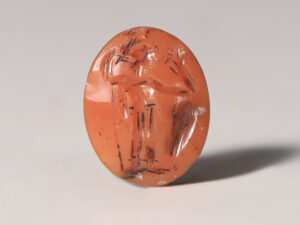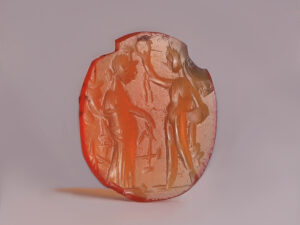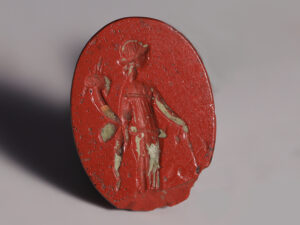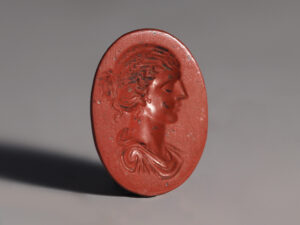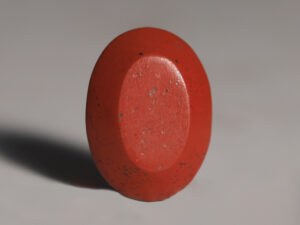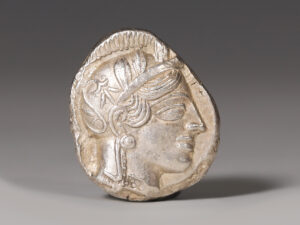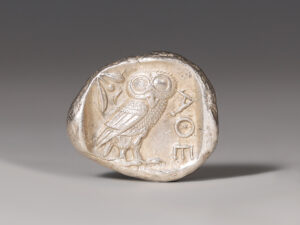The term intaglio refers to a small image that has been engraved into a gemstone and usually set in a piece of jewellery, most commonly a ring. Such artistic form has its origin in Sumer in the 4th millennium BC, with the appearance of cylinder and stamp seals, whereby decorations and patterns were engraved into soft stones. Intaglios with fine detailing were highly desired with one reason being that the intricacy made wax seals difficult to forge. The earliest intaglios were produced by hand using simple iron tools along with abrasive emery powders. Common scenes used during the Roman period were animals, mythological creatures and portraits. During the Hellenistic period and the early Roman Empire, the art of intaglio reached its apogee, with there being a steady decline in craftsmanship in the late Imperial Rome, until a revival of interest with the Byzantine and during the Renaissance.
In Roman religion Minerva, the equivalent of the Greek goddess Athena, was an extremely important and powerful deity. Together with Jupiter and Juno, she was part of the Capitoline Triad worshipped on the Capitoline Hill, which integrated the Etruscan trinity formed by Tini, Uni and Menura, into the Roman religion. She was worshipped by the Romans as the goddess of medicine, strategy, science and wisdom. Contrary to the god of war Mars, she was believed to fight on behalf of just causes, hence, was not seen as a patron of violence, but as a civilising influence. The iconography of Minerva holding a spear and shield appears all throughout Roman art and in Roman imperial coinage.
To find out more about intaglios and Roman goddesses please visit our relevant blog posts: Engraved Gemstones in Ancient Rome and Roman Goddesses in Mythology.











